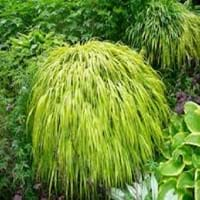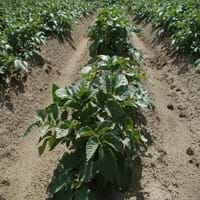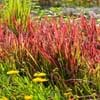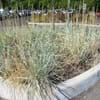Life Span
Perennial
Annual
Origin
Japan
Hybrid origin, South America, Chile
Types
Not Available
Melody, King Edward potato, Kennebec
Habitat
meadows, Riverbanks, Wet Woods
Cold Regions, Tropical regions, Wet ground, Wet lands
USDA Hardiness Zone
5-9
Not Available
Sunset Zone
1a, 1b, 2a, 2b, 3a, 3b, 4, 5, 6, 7, 8, 9, 10, 11, 12, 13, 14, 15, 16, 17, 18, 19, 20, 21, 22, 23, 24
A1, A2, A3, H1, H2, 1a, 1b, 2a, 2b, 3a, 3b, 4, 5, 6, 7, 8, 9, 10, 11, 12, 13, 14, 15, 16, 17, 18, 19, 20, 21, 22, 23, 24
Habit
Clump-Forming
Clump-Forming
Flower Color
Blue Violet
Blue, Purple, Red, White
Flower Color Modifier
Bicolor
Bicolor
Fruit Color
Purple
Sandy Brown
Leaf Color in Spring
Yellow, Green, Light Green
Green
Leaf Color in Summer
Light Green
Not Available
Leaf Color in Fall
Orange, Yellow green, Orange Red
Not Available
Leaf Color in Winter
Green, Dark Green, Not Available
Not Available
Plant Season
Spring, Summer, Fall
Summer, Fall
Sunlight
Full Sun, Partial Sun, Partial shade
Full Sun
Type of Soil
Loam
Loose, Well drained
The pH of Soil
Acidic, Neutral
Acidic
Soil Drainage
Well drained
Well drained
Bloom Time
Late Summer, Early Fall, Fall
Early Summer, Summer, Late Summer
Tolerances
Dry soil, Shallow soil
Drought
Where to Plant?
Ground
Container, Ground, Pot
How to Plant?
From Rhizomes
From bulbs
Plant Maintenance
Medium
Medium
Watering Requirements
Keep ground moist
Requires consistently moist soil, Requires regular watering, Requires watering in the growing season, Water daily during growing season
In Summer
Lots of watering
Lots of watering
In Spring
Consistently
Moderate
In Winter
Adequately
Average Water
Soil pH
Acidic, Neutral
Neutral
Soil Drainage Capacity
Well drained
Well drained
Sun Exposure
Full Sun, Partial Sun, Partial shade
Full Sun
Pruning
Prune grass to maintain level, Prune if you want to improve plant shape
Remove damaged leaves, Remove dead branches, Remove dead leaves, Remove deadheads
Fertilizers
organic fertlizers
15-15-15 amounts
Pests and Diseases
Not Available
Red blotch
Plant Tolerance
Shade areas, Shallow soil, Wet Site
Drought
Flowers
Insignificant
Yes
Flower Petal Number
Single
Single
Foliage Texture
Medium
Coarse
Foliage Sheen
Matte
Matte
Attracts
Ants, Beetles, Caterpillar
Beetles, Bugs, Early/Late Blight, Insects
Allergy
allergic conjunctivitis, Asthma, Rash
Abdominal pain, Asthma, Dermatitis, Diarrhea, Eczema, Nausea, Runny nose, Sore Throat, Swelling, Throat itching, Tight chest, Urticaria, Vomiting
Aesthetic Uses
Beautification, Ground Cover
Not Used For Aesthetic Purpose
Beauty Benefits
Not Available
For treating wrinkles, Good for skin and hair, Improve skin tone, Moisturizing, Not Available, Treatment of Dark Spots
Environmental Uses
Provides ground cover, Shadow Tree
Air purification
Medicinal Uses
Acne, Aging, Laxative
Bone strength, Cancer, Diarrhea, Digestion problems, High blood pressure, Improve heart health, Inflammation, Kidney Stones, Metabolism, Rheumatism, Weight management and satiety
Part of Plant Used
Leaves
Fruits
Other Uses
Can be made into a herbal tea, Showy Purposes
Used As Food, Used as Ornamental plant
Used As Indoor Plant
Sometimes
Yes
Used As Outdoor Plant
Yes
Yes
Garden Design
Container, Edging, Mixed Border, Rock Garden / Wall, Water Gardens
Edible, Herb, Vegetable
Botanical Name
HAKONECHLOA macra 'Aureola'
SOLANUM tuberosum
Common Name
Golden Japanese Forest Grass, Hakone Grass
Potato, Tater, Spud, Tuber
In Hindi
जापानी वन घास
आलू
In German
Japanische gras
Kartoffel
In French
Forêt herbe japonaise
Pomme de terre
In Spanish
forestales hierba japonesa
Patata
In Greek
Ιαπωνικά γρασίδι δάσος
Πατάτα
In Portuguese
floresta grama japonês
Batata
In Polish
Japoński las lato
Ziemniak
In Latin
Forest gramina Italica
SOLANUM TUBEROSUM
Phylum
Angiosperms
Anthophyta
Class
Monocots
Magnoliopsida
Family
Poaceae
Solanaceae
Genus
Hachanechloa
Solanum
Clade
Angiosperms
Asterids
Tribe
Not Available
Not Available
Subfamily
Arundinariinae
Not Available
Number of Species
Not Available
Season and Care of Japanese Forest Grass and Potato
Season and care of Japanese Forest Grass and Potato is important to know. While considering everything about Japanese Forest Grass and Potato Care, growing season is an essential factor. Japanese Forest Grass season is Spring, Summer and Fall and Potato season is Spring, Summer and Fall. The type of soil for Japanese Forest Grass is Loam and for Potato is Loose, Well drained while the PH of soil for Japanese Forest Grass is Acidic, Neutral and for Potato is Acidic.
Japanese Forest Grass and Potato Physical Information
Japanese Forest Grass and Potato physical information is very important for comparison. Japanese Forest Grass height is 30.50 cm and width 30.50 cm whereas Potato height is 91.44 cm and width 60.96 cm. The color specification of Japanese Forest Grass and Potato are as follows:
Japanese Forest Grass flower color: Blue Violet
Japanese Forest Grass leaf color: Yellow, Green and Light Green
Potato flower color: Blue, Purple, Red and White
- Potato leaf color: Green
Care of Japanese Forest Grass and Potato
Care of Japanese Forest Grass and Potato include pruning, fertilizers, watering etc. Japanese Forest Grass pruning is done Prune grass to maintain level and Prune if you want to improve plant shape and Potato pruning is done Remove damaged leaves, Remove dead branches, Remove dead leaves and Remove deadheads. In summer Japanese Forest Grass needs Lots of watering and in winter, it needs Adequately. Whereas, in summer Potato needs Lots of watering and in winter, it needs Average Water.





